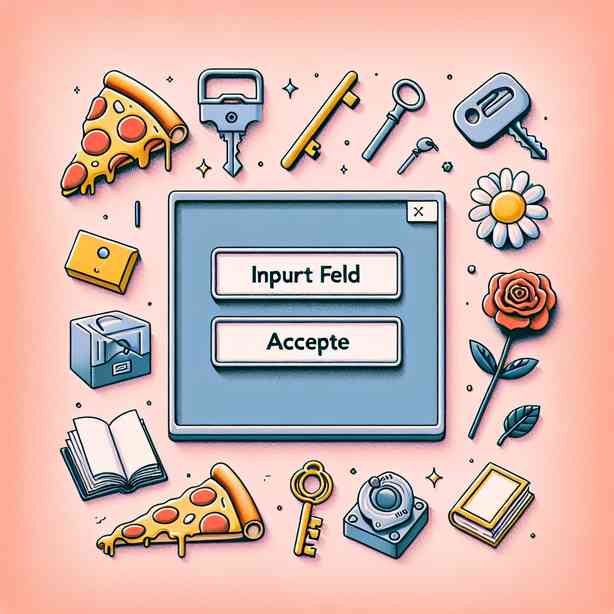
The input field that accepts anything, regrettably, is a common yet significant aspect of our digital world today. As we explore this topic, we will delve into the implications, functionalities, and the potential pitfalls associated with such fields, while emphasizing the importance of usability and security in web design.
An input field that accepts any type of data may seem to offer flexibility and freedom to the user, but it also presents a range of challenges, particularly concerning user input validation. Before we proceed to the specifics, it’s vital to understand the fundamentals of input fields in web applications. These fields are designed to gather data from users, and they can take various forms, including text boxes, drop-down lists, and checkboxes. Although the underlying technology might differ, their primary purpose remains the same: to collect user data efficiently and accurately.
One of the most significant advantages of an input field that accepts anything is the ease it provides for user interaction. It allows users to submit a wide array of information without constraints, which, in specific contexts, can enhance the user experience. For instance, in creative applications where user-generated content is valued, such flexibility encourages individuals to express themselves freely. Users can input text, links, or even images, fostering an engaging and dynamic platform.
However, this open-ended acceptance of input is accompanied by substantial risks. One of the critical issues is the potential for malicious input, which can jeopardize the integrity and security of the application. Without proper validation and sanitization techniques, such fields become prime targets for attackers who may exploit vulnerabilities to inject harmful scripts, leading to cross-site scripting (XSS) attacks. These attacks not only compromise user data but can also damage the overall reputation of a website or service, driving users away from what was once a trusted platform.
Moreover, allowing unrestricted input can lead to data integrity issues. When a web application fails to enforce specific data types or formats, it opens the door for erroneous or irrelevant information to be stored in the database. This can cause significant problems during data retrieval and processing, ultimately leading to inaccurate outputs or malfunctioning features, which can frustrate users and diminish their trust in the application.
To mitigate these challenges, web developers must adopt a balanced approach that prioritizes both user freedom and security. Implementing robust validation and sanitization mechanisms is paramount. Validation techniques can include setting character limits, specifying allowable input formats, and employing regular expressions to filter unsuitable data effectively. For example, if an input field is designed to accept email addresses, it should only allow characters that are valid in an email format while rejecting any other characters or strings.
Sanitization is equally important to ensure that the input does not contain potentially harmful data. This process involves cleaning the input by removing or encoding specific characters that might cause security vulnerabilities. Together, validation and sanitization form a protective barrier that enhances the overall security of the application while still catering to user input needs.
Another aspect to consider when designing input fields is user experience (UX). Users often expect immediate feedback when they input data. A simple yet effective method of enhancing UX is to provide real-time validation feedback. For example, if a user tries to enter an invalid email address, instant prompts indicating the error can guide them towards correcting their input. This type of feedback not only improves user satisfaction but also minimizes the likelihood of erroneous submissions later on.
Besides immediate feedback, developers should ensure that the interface intuitively guides users on what should be expected in the input field. Placeholder texts, tooltips, and example inputs can help users understand the desired format, thereby reducing frustration and increasing the likelihood of successful submissions. Such proactive measures contribute significantly to a positive user experience and enhance the usability of the application.
Furthermore, accessibility considerations must not be overlooked. Input fields should be designed with inclusivity in mind, ensuring that all users, including those with disabilities, can navigate and interact with them effectively. Employing semantic HTML, proper labeling, and appropriate focus management can ensure that input fields are accessible to screen reader users and keyboard navigators. This enhances the overall usability of the application and fosters an inclusive environment.
As the digital landscape continues to evolve, we witness a growing trend towards more sophisticated input mechanisms. Beyond traditional open-ended fields, we are now seeing the emergence of predictive text input, auto-complete features, and dynamic input fields that adjust based on user input. These advancements can provide a more seamless and efficient experience for users, allowing them to interact with the application in a more fluid manner. However, with these advancements also come heightened responsibilities for developers to ensure that such features do not compromise application security or usability.
In conclusion, while input fields that accept any data type can significantly enhance user interaction and engagement, they also require careful design and implementation to avoid potential pitfalls. Developers must strike a balance between flexibility and security, ensuring thorough validation and sanitization processes are in place while fostering a user-friendly environment. By emphasizing user experience, accessibility, and modern input mechanisms, we can create input fields that not only serve their purpose effectively but also contribute positively to the overall usability of web applications.
Through thoughtful design and attention to detail, it is indeed possible to have an input field that embraces user creativity and freedom while safeguarding the integrity and security of the application. Thus, as we navigate this continuously evolving digital landscape, let us strive to create spaces that empower users while cultivating a safe and enjoyable online environment.


